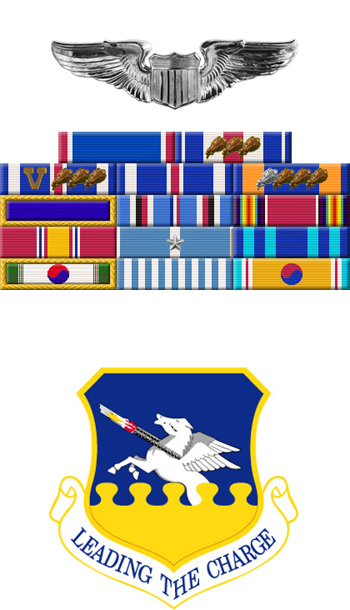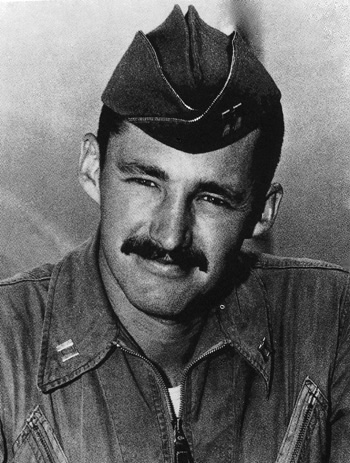Dolph Overton was born on April 2, 1927, in Andrews, South Carolina. He enlisted in the U.S. Navy during World War II, and entered the U.S. Military Academy at West Point on July 2 1945, graduating with a commission as a 2d Lt in the U.S. Air Force on June 7, 1949. Lt Overton next completed pilot training, and was awarded his pilot wings at Williams AFB, Arizona, on August 4, 1950, and then flew F-84 Thunderjets with the 31st Fighter Group at Turner AFB, Georgia, until February 1952, when he deployed to Korea. Overton served with the 8th Fighter-Bomber Squadron of the 49th Fighter-Bomber Wing in Korea, flying 102 combat missions before joining the 16th Fighter-Interceptor Squadron of the 51st Fighter-Interceptor Wing, flying F-86 Sabres from August 1952 to January 1953. During this time, Capt Overton was credited with the destruction of 5 enemy aircraft in aerial combat plus 1 damaged, in a span of only 4 days, from January 21 to January 25, 1953. It is possible he destroyed as many as 7 during that time, but 2 were unconfirmed. He resigned his commission in April 1953. Dolph and his wife Sue had four daughters, one son, and 10 grandchildren together before his death on March 25, 2013. He was buried at Prince George Winyah Cemetery in Georgetown, South Carolina.
His Distinguished Service Cross Citation reads:
For extraordinary heroism in action against an armed enemy of the United Nations as Group Leader of twenty-five F-84 type Aircraft, 49th Bomber Wing, Fifth Air Force, on 28 June 1952. On that date, Lieutenant Overton's group was diverted against a target of truck convoys discovered by a previous recce flight. Working in and through an overcast, Lieutenant Overton planned and executed a very difficult attack, sequencing his aircraft in such a manner as to provide maximum coverage of the target with minimum risk from heavy ground fire. With disregard for his own safety, Lieutenant Overton remained in enemy fire under the overcast so that he could visually direct the attacks and withdrawals. So successful was Lieutenant Overton's direction of the attack, that one hundred fifty trucks were destroyed and confirmed by photograph, making it one of the largest such strikes of the war. Lieutenant Overton's command of this strike in such adverse conditions and with such devastating results highlights his superb flying skill and extraordinary heroism in the face of fierce enemy opposition. Lieutenant Overton's actions reflect great credit upon himself, the Far East Air Force, the United States Air Force, and the United Nations Command.
His 4th Silver Star Citation reads:
First Lieutenant Dolphin D. Overton III distinguished himself by gallantry in action during military operations against an armed enemy of the United States as F-86 Pilot over Korea. During his second combat tour, in a torrid 4-day period of 21-24 January 1953, Lieutenant Overton led the 51st Fighter Interceptor Wing in the confirmed shoot-down of four enemy MiG-15s. On 25 January 1953 while flying his aircraft near Uiju, Korea, Lieutenant Overton shot down his fifth enemy MiG-15. This accomplishment set a record in his becoming a jet Ace in the shortest period of time, becoming the 24th of the 38 Aces of the Korean War. The professional competence, aerial skill, and devotion to duty displayed by Lieutenant Overton in the dedication of his service to his country reflect great credit upon himself and the United States Air Force.
|



